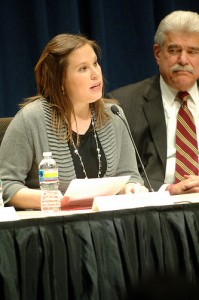By: Richard J. Davey, MD
You might be aware that FDA plays a key role in assuring the safety and efficacy of products such as drugs, vaccines and foods. But less well known is the agency’s critical regulatory oversight of our nation’s blood supply.
 Blood saves and improves the lives of millions of individuals each year. It is used for transfusions for example, to replace blood loss during surgery, childbirth or following a traumatic injury. Blood and blood products are also a key part of the medical treatment of serious illnesses such as cancer, organ failure, or sickle cell disease. Additionally, blood and blood products are used to prevent and treat many medical conditions, such as infections and blood clotting disorders.
Blood saves and improves the lives of millions of individuals each year. It is used for transfusions for example, to replace blood loss during surgery, childbirth or following a traumatic injury. Blood and blood products are also a key part of the medical treatment of serious illnesses such as cancer, organ failure, or sickle cell disease. Additionally, blood and blood products are used to prevent and treat many medical conditions, such as infections and blood clotting disorders.
The Office of Blood Research and Review, which is part of FDA’s Center for Biologics Evaluation and Research, regulates both whole blood and blood components for transfusion, as well as various other blood products. FDA works with blood collecting establishments, product manufacturers, health care providers, patient organizations, academic researchers, and other government agencies to ensure a safe and adequate blood supply.
 FDA goes to great lengths to ensure that our blood products are safe. FDA reviews and approves new products, conduct research, issue guidances and regulations, conduct inspections of manufacturing facilities, and communicates with manufacturers, consumers and health care providers about blood product safety and efficacy issues. FDA also assists in product recalls when necessary, and works with regulatory agencies in other nations as well as international organizations such as the World Health Organization.
FDA goes to great lengths to ensure that our blood products are safe. FDA reviews and approves new products, conduct research, issue guidances and regulations, conduct inspections of manufacturing facilities, and communicates with manufacturers, consumers and health care providers about blood product safety and efficacy issues. FDA also assists in product recalls when necessary, and works with regulatory agencies in other nations as well as international organizations such as the World Health Organization.
Blood donation is another key area where FDA plays a major role. Beginning with safe donations, we regulate the processes by which blood is collected and manufactured
Each year, nearly 11 million volunteer donors provide about 17,000,000 donations of blood and blood components for transfusion to about 4.5 million recipients, according to the National Blood Collection and Utilization Survey Report. About a third of these volunteers are first-time donors. And, more than 18 million units of Source Plasma are donated each year for use in manufacturing plasma-derived products, such as clotting factors and immune globulins.
To make sure blood and blood products are safe for recipients, FDA has established a system of five layers of safety for donated blood. Maintaining an adequate supply of blood and blood components is vitally important, and to help achieve this goal the U.S. Department of Health and Human Services recognizes and participates in World Blood Donor Day.
We hope this information gives you a better idea of how FDA helps keep blood and blood products safe and available for you and your family. And, we urge you to consider helping to save lives by donating blood today!
Richard J. Davey, MD, is Director of CBER’s Division of Blood Applications, Office of Blood Research and Review







